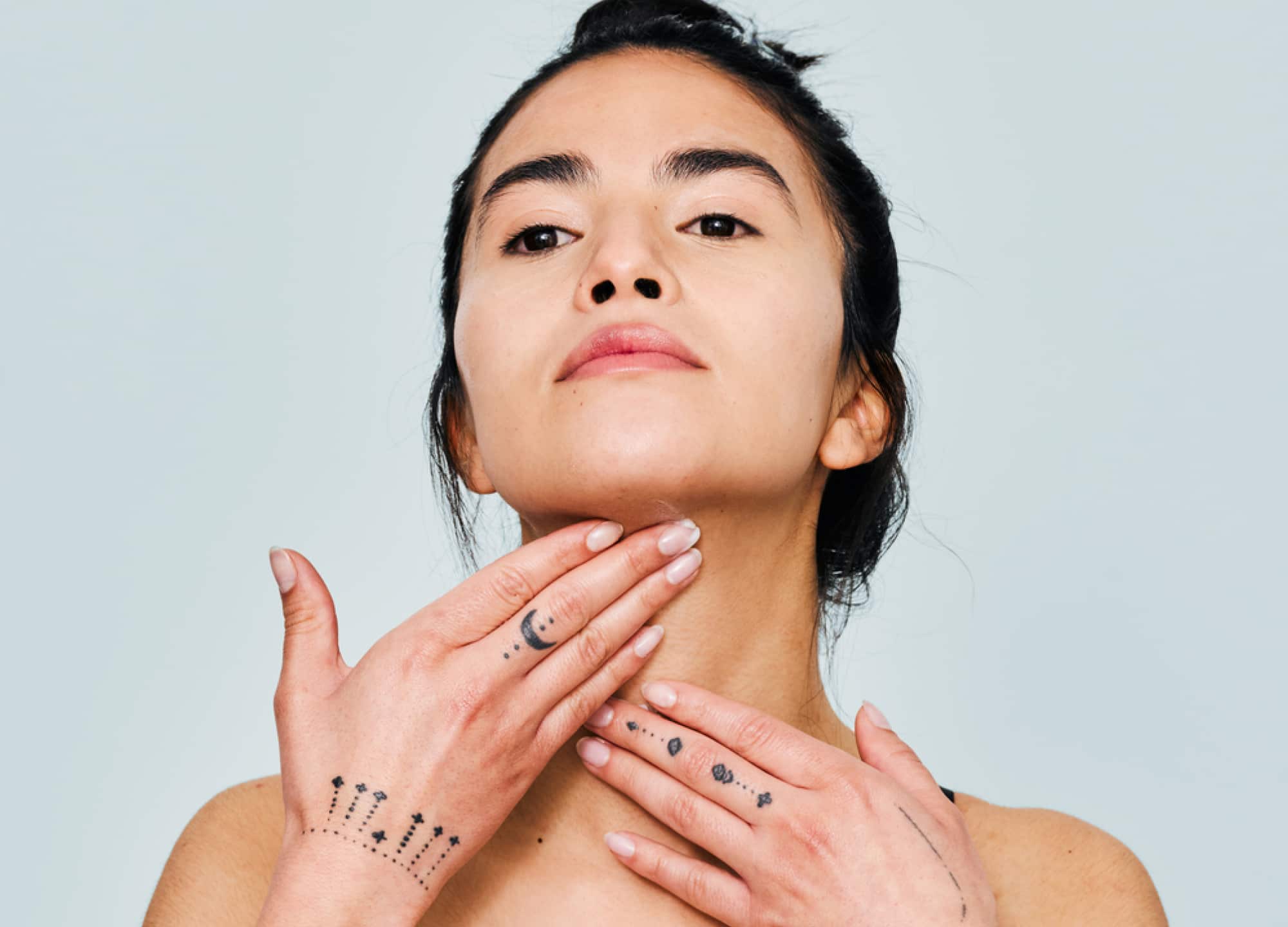Featured Experts
Dr. Bryan Forley, a board-certified plastic surgeon in New York City
Dr. Ari Hoschander, a board-certified plastic surgeon in Rockville Centre, New York
Dr. Yael Halaas, a board-certified plastic surgeon in New York City
Whether it’s the rise of tech neck or the collective snatching of our jawline, there’s never been a better time to care about this long overlooked area. There are now a slew of treatments, be they a surgical neck lift, chin lipo, or Ultherapy (a favorite among dermatologists), designed to lift, tighten, and smooth the skin. And they’re especially powerful, since topical treatments can only go so far to offset the downward pull of gravity—topicals may improve the look of skin but can’t necessarily make it stop sagging.
To offer an option between going under the knife and settling for neck cream, MyEllevate is a procedure that uses sutures to lace up the muscles (in a sense) and manually pull them together, lifting the skin and restoring a smooth contour. But what makes it better than—or different from—a neck lift? Experts explain.
What is MyEllevate?
MyEllevate is a technique that contours the jawline using sutures within the deep tissue of the skin. “The MyEllevate neck procedure utilizes the placement of a permanent suture support system through small punctures in the neck to define the jawline and support the sagging structures under the skin,” says Dr. Bryan Forley, a board-certified plastic surgeon in New York City. Not only does it have a lifting effect, but the sutures are also able to cut the platysma muscle bands—the lines that run vertically down the neck and become increasingly noticeable with age—to reduce their appearance without an open surgery.
This can resculpt the entire lower half of the face. “By supporting the bands and glands of the neck with sutures, the treatment helps reshape and rejuvenate the neck and jaw,” says board-certified plastic surgeon Dr. Ari Hoschander, who practices in Rockville Centre, New York. The procedure consists of a super-slim rod (lit with an LED light) that works as a guide, so your provider can “strategically sew or lace the underlying muscles and glands of the neck together without surgically opening the area,” says Dr. Hoschander. You need only a local anesthetic, and the results last at least five years.
Unlike thread lifts, which tighten and lift the skin, MyEllevate can support skin, muscles, and even glands. For one, “the MyEllevate procedure can be used to treat a low-lying salivary gland that produces a visible bulging under the jawline,” says Dr. Forley. On top of that, “while threads’ efficacy ranges from six months to a year, MyEllevate is a permanent suture,” says Dr. Yael Halaas, a board-certified plastic surgeon in New York City. Plus threads can be placed in both the face and neck, whereas MyEllevate sutures are placed only in the jawline and neck via carefully marked entry points in the skin, which ensures that the suture has the desired effect, says Dr. Halaas, who compares it to that of a corset.
What is a neck lift?
A neck lift is a surgery that involves removing excess fat and skin and manually lifting so the area is smooth and taut. There are some variations on the surgery, like a mini neck lift, which comes with less downtime but is best for milder sagging or skin laxity. “Facelifts and neck lifts are comparable for lifting and tightening the neck,” says Dr. Hoschander. “These procedures differ in terms of the techniques used and the extent of invasiveness.”
As with most surgical procedures, the improvements are more significant than anything you can get with noninvasive or minimally invasive treatments, and they last longer—roughly 10 to 15 years. The downside is, of course, that the recovery is usually longer, lasting one to two weeks.
Who is the ideal candidate for each procedure?
The ideal candidate for MyEllevate is someone who has mild to moderate laxity in their neck and jawline as well as excess fat in the neck area, says Dr. Hoschander. His patients tend to be in their 30s or 40s and have realistic expectations about the results (more on that in a minute).
It’s also a good option if you’re looking for something without a long recovery period. “MyElleveate requires less downtime than neck lifts, and most patients are back to normal activities in three to five days,” he says.
However, a neck lift or facelift is better if you have more severe skin sagging or platysmal banding. The expectations about the results also factor into this decision. “If a patient mentions or demonstrates a more aggressive ‘lift’ to the neck and face area, this will lead us into the surgical arena as far as results,” says Dr. Halaas.
That said, MyEllevate can be a good starting point if you’re not quite ready for surgery—or you have only mild sagging. It also works best when paired with other devices. “The aging neck will benefit from skin tightening and improved collagen with the use of radiofrequency devices, while the jawline definition and muscle bands are best treated by MyEllevate,” says Dr. Forley.
For her part, Dr. Halaas recommends pairing MyEllevate with another minimally invasive procedure called FaceTite. “FaceTite is a jawline contouring and tightening procedure that employs radiofrequency with heat for significant skin tightening,” she says. With FaceTite, a cannula is inserted, via a tiny incision, into the skin, where it heats the deeper dermal layers in order to tighten and lift.
In cases like this, “patients will decide to start with FaceTite and MyEllevate, with the understanding that it will give some improvement with minimal downtime,” says Dr. Halaas. “Then we can plan for surgery in the future.” At that point, the MyEllevate suture can safely be removed, clearing the way for the manual—and more dramatic—lift.











